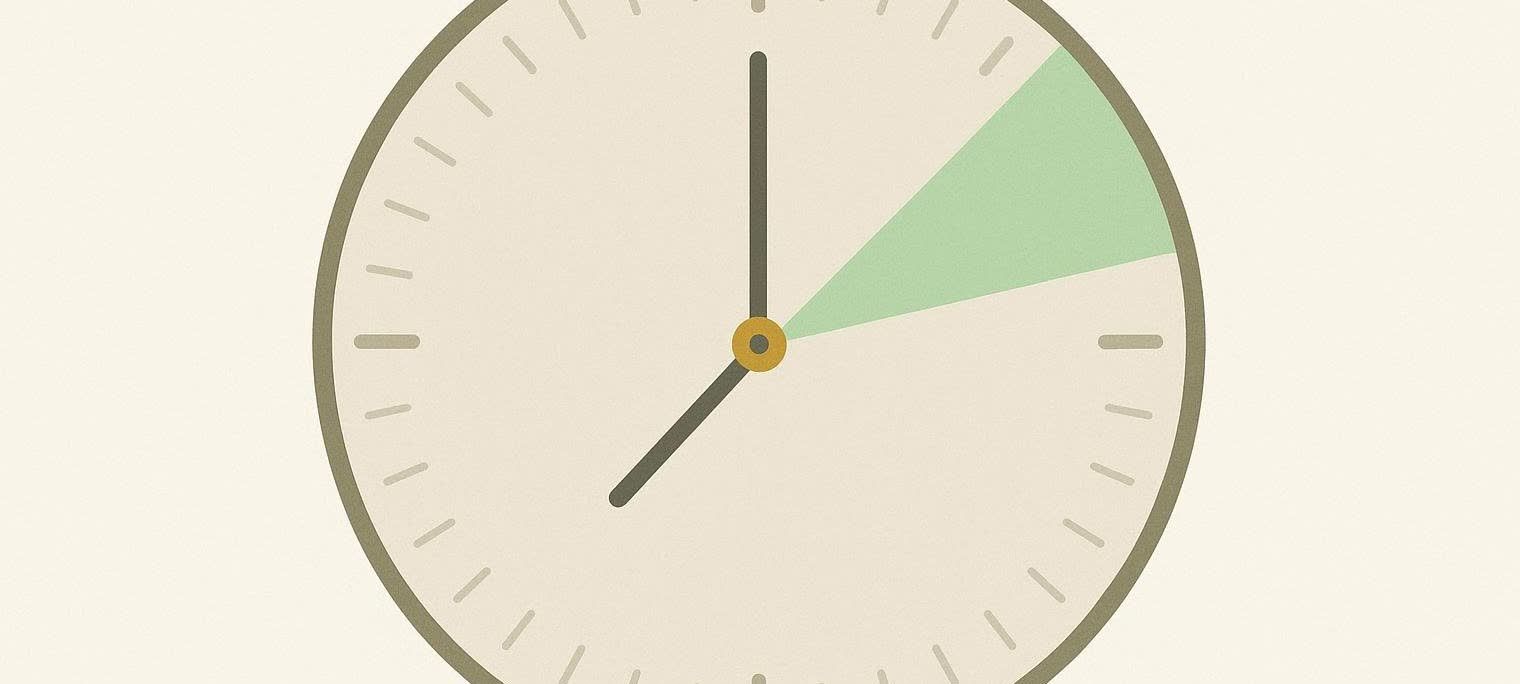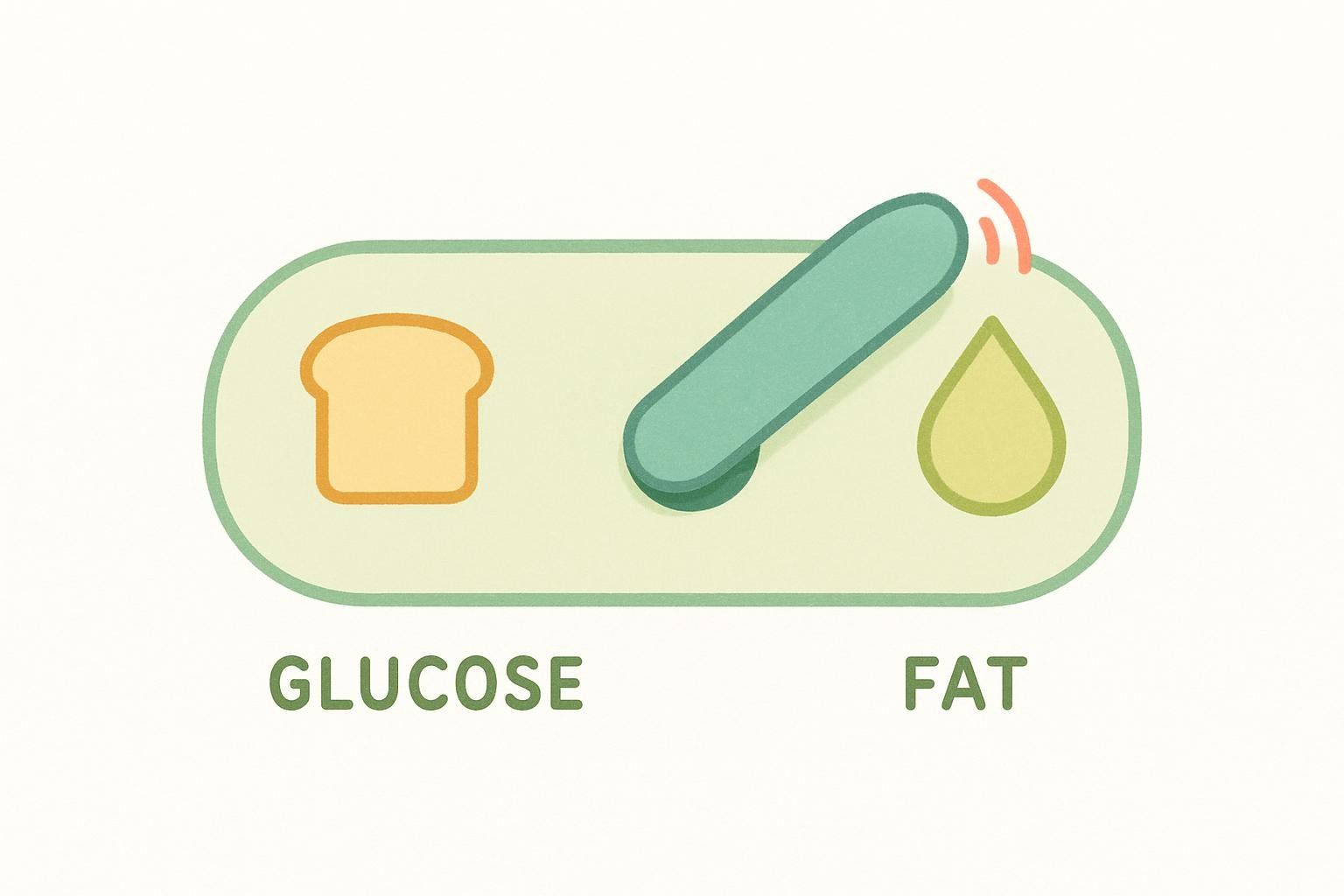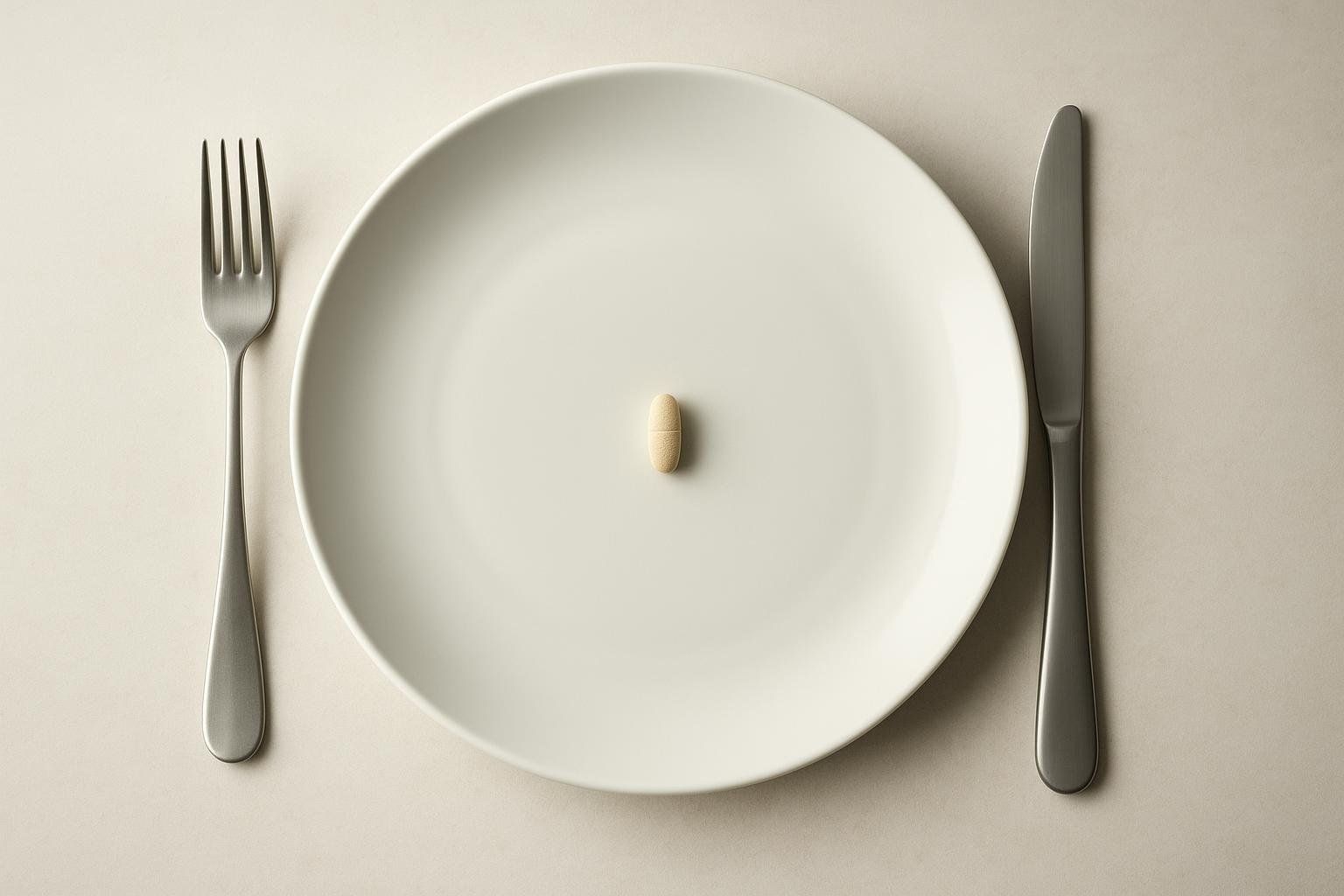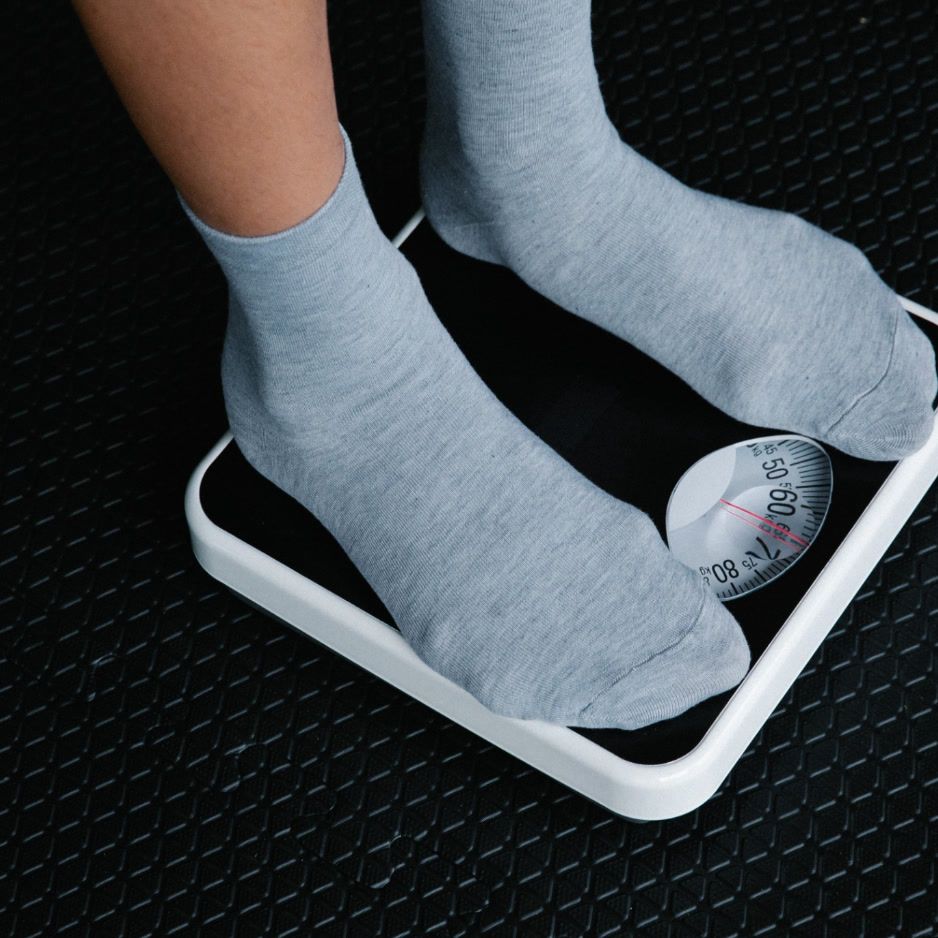OMAD: The Ultimate Guide to One Meal a Day Eating

OMAD Diet Guide: Benefits, Meal Plans & How to Start One Meal a Day Safely
Updated October 2025
The One Meal a Day (OMAD) diet represents the most advanced form of intermittent fasting, offering benefits like simplified eating, potential weight loss, and improved metabolic health. While OMAD requires commitment and isn't suitable for everyone, thousands of people successfully use this eating pattern to achieve their health goals. This guide provides step-by-step instructions for safely starting OMAD, complete with a 7-day meal plan and science-backed implementation strategies.
Below you'll find everything you need to know about OMAD—from practical meal plans to the research behind it, plus safety considerations and alternatives.
What Is OMAD (One Meal a Day)?
OMAD is an advanced intermittent fasting method where you consume all your daily calories within a single 1-2 hour eating window, followed by a 22-23 hour fast. Unlike gentler approaches like the 16:8 method, OMAD compresses your entire nutritional intake into one substantial meal.
How OMAD Works
The OMAD approach triggers powerful metabolic changes through these mechanisms:
- Extended 22-23 hour fasting window allows your body to deplete glycogen stores and shift to fat-burning mode
- Single concentrated meal provides all daily nutrients in one sitting
- Metabolic switching from glucose to stored fat creates ketosis for enhanced fat oxidation

OMAD Benefits: Why People Choose One Meal a Day
Despite being an extreme fasting protocol, OMAD practitioners report compelling benefits:
Simplified Meal Planning and Time Savings
OMAD eliminates decision fatigue around food choices and dramatically reduces time spent on meal prep. You'll:
- Cut grocery shopping to one weekly trip
- Reduce meal preparation to just once daily
- Eliminate multiple rounds of cooking and cleanup
- Free up 1-2 hours per day previously spent on meals
Weight Loss and Fat Burning
The naturally restricted eating window makes it difficult to consume excess calories, creating an automatic calorie deficit. Research shows that OMAD can trigger:
- Enhanced fat oxidation during the extended fasting period
- Improved insulin sensitivity in healthy individuals
- Reduced overall calorie intake without deliberate restriction
A 2022 study published in Nutrients followed 13 lean, healthy participants through an 11-day trial comparing one meal per day to three meals per day and found significant decreases in total body mass and fat mass with the one-meal pattern.
Mental Clarity and Focus
Many OMAD practitioners report:
- Improved concentration during fasted states
- Elimination of post-meal energy crashes
- More stable energy levels throughout the day
- Enhanced productivity during working hours
Metabolic Health Improvements
Studies indicate OMAD may improve:
- Blood sugar control during the second half of the day
- Fat adaptation and metabolic flexibility
- Growth hormone levels that preserve lean muscle
- Autophagy (cellular cleaning and repair processes)
How to Start OMAD: Step-by-Step Guide for Beginners
Starting OMAD requires a strategic approach. Jumping directly from three meals per day to OMAD often leads to failure. Follow this progression:
Step 1: Build Your Fasting Foundation (Weeks 1-2)
Start with 16:8 intermittent fasting to adapt your body to extended periods without food:
- Fast for 16 hours (including sleep)
- Eat within an 8-hour window
- Focus on nutrient-dense whole foods
- Stay hydrated with water, black coffee, and unsweetened tea (see complete beverage guide below)
Step 2: Progress to Intermediate Fasting (Weeks 3-4)
Advance to 20:4 fasting:
- Extend your fast to 20 hours
- Compress eating window to 4 hours
- Consume two smaller meals within your window
- Monitor energy levels and adjust as needed
Step 3: Transition to OMAD (Week 5+)
Once comfortable with 20:4, attempt OMAD:
- Choose your optimal meal timing (most choose dinner)
- Plan nutrient-dense meals that meet daily calorie needs
- Start with 2-3 OMAD days per week
- Gradually increase frequency as your body adapts
Choosing Your Eating Window
Select a consistent time that fits your lifestyle:
- Morning (7-9 AM): Best for those who prefer eating breakfast and working in a fasted state
- Midday (12-2 PM): Ideal for social lunch schedules
- Evening (5-7 PM): Most popular option for family dinners and social eating
Research suggests that eating earlier in the day may provide metabolic advantages, though consistency matters more than timing.
OMAD Meal Plan: 7-Day Guide with Recipes
Meeting all your nutritional needs in one meal requires strategic planning. Here's a complete 7-day OMAD meal plan designed to provide 1,800-2,000 calories with optimal macronutrient distribution.
Day 1: Salmon Power Bowl
Main Dish: 8 oz grilled salmon with lemon and herbs
Sides: 1 cup quinoa, roasted vegetables (broccoli, bell peppers, zucchini) with olive oil, large mixed green salad with avocado
Dessert: Greek yogurt with mixed berries and walnuts
Macros: ~2,000 cal | 120g protein | 65g fat | 140g carbs
Day 2: Mexican-Inspired Feast
Main Dish: 8 oz seasoned grilled chicken breast
Sides: Black beans and brown rice, sautéed peppers and onions, guacamole, salsa, small portion of corn chips
Dessert: Fresh mango slices
Macros: ~1,900 cal | 115g protein | 60g fat | 160g carbs
Day 3: Mediterranean Plate
Main Dish: 8 oz lamb or beef steak
Sides: Large Greek salad with feta cheese, hummus with whole wheat pita, roasted sweet potato
Dessert: Fresh figs with honey and almonds
Macros: ~2,000 cal | 110g protein | 70g fat | 145g carbs
Day 4: Asian-Inspired Bowl
Main Dish: 8 oz teriyaki tofu or chicken
Sides: Stir-fried vegetables (bok choy, mushrooms, snap peas) in sesame oil, 1.5 cups white rice, edamame
Dessert: Sliced oranges
Macros: ~1,850 cal | 100g protein | 55g fat | 175g carbs
Day 5: Hearty American
Main Dish: 8 oz grass-fed burger patty
Sides: Sweet potato fries baked in olive oil, large Caesar salad, sautéed mushrooms and onions
Dessert: Dark chocolate and mixed nuts
Macros: ~1,950 cal | 115g protein | 75g fat | 135g carbs
Day 6: Italian Night
Main Dish: 6 oz grilled chicken with marinara
Sides: Whole wheat pasta (2 cups cooked) with olive oil and parmesan, roasted vegetables, Caprese salad
Dessert: Tiramisu or panna cotta
Macros: ~2,000 cal | 110g protein | 65g fat | 165g carbs
Day 7: Breakfast-Style Dinner
Main Dish: 4-egg omelet with cheese and vegetables
Sides: 2 slices whole grain toast with avocado, hash browns, fresh fruit salad, Greek yogurt parfait
Dessert: Protein pancakes with maple syrup
Macros: ~1,900 cal | 105g protein | 70g fat | 150g carbs
Essential Meal Planning Tips
Prioritize Protein: Aim for 100-130g of protein to preserve muscle mass. Include lean meats, fish, eggs, dairy, or plant-based proteins at every meal.
Include Healthy Fats: Add 60-80g of fat from avocados, nuts, seeds, olive oil, and fatty fish to promote satiety and hormone production.
Load Up on Fiber: Target 25-35g of fiber through vegetables, fruits, whole grains, and legumes to support digestion and gut health.
Don't Forget Micronutrients: Include a rainbow of colorful vegetables to ensure adequate vitamin and mineral intake.
What to Drink During Your OMAD Fast
During your 22-23 hour fasting window, you can consume zero-calorie beverages:
Allowed:
- Water (aim for 8-10 glasses daily)
- Black coffee (no cream, milk, or sweeteners)
- Plain tea (green, black, herbal, unsweetened)
- Sparkling water
- Electrolyte supplements (zero-calorie)
Not Allowed:
- Any beverage with calories
- Bulletproof coffee (butter and MCT oil break the fast)
- Protein shakes
- Juice or smoothies
- Diet sodas (technically zero-calorie but may trigger insulin response)
Hydration and Electrolytes: Extended fasting can deplete electrolytes, especially sodium, potassium, and magnesium. Consider adding:
- Pinch of sea salt to water
- Sugar-free electrolyte powder
- Bone broth with minerals (only if doing a less strict OMAD variant)
What Does the Science Say About OMAD?
While research specifically on OMAD remains limited, several controlled trials provide insights into one-meal-per-day eating patterns.
Body Composition Changes
The 2022 Nutrients study found:
- Significant decreases in total body mass and fat mass
- Preserved lean muscle mass and bone mineral density
- Lower glucose concentrations during afternoon hours
- Higher LDL cholesterol in the one-meal group
A separate 2007 controlled trial tracking participants for eight weeks on OMAD showed:
- Decreased body weight and fat mass
- Increased hunger sensations
- Elevated blood pressure in some participants
- Higher total and LDL cholesterol levels
- Increased cortisol concentrations
Important Cardiovascular Considerations
A 2024 preliminary study presented at an American Heart Association conference found a correlation between 8-hour eating windows and increased cardiovascular risk.
While this observational study examined shorter eating windows (not OMAD specifically) and does not prove causation, it highlights the importance of medical supervision for extreme fasting protocols.
Is OMAD Safe? Understanding the Risks
While OMAD offers benefits, it's important to understand potential challenges:
1. Nutritional Adequacy

Meeting all micronutrient needs in a single meal proves extremely difficult. Potential deficiencies include:
- B vitamins (especially B12 and folate)
- Calcium and vitamin D
- Iron and zinc
- Essential omega-3 fatty acids
Solution: Focus on nutrient-dense whole foods and consider high-quality supplementation under medical guidance.
2. Metabolic Considerations
Some studies show OMAD can cause:
- Elevated blood pressure in certain individuals
- Higher cholesterol levels (particularly LDL)
- Increased cortisol (stress hormone)
- Blood sugar fluctuations in diabetics
3. Hunger and Eating Behaviors

The extended fast can trigger:
- Intense hunger leading to overeating during your meal
- Potential development of binge-eating patterns
- Difficulty maintaining social eating situations
- Food preoccupation during fasting hours
4. Sustainability Challenges
Research shows OMAD has:
- Dropout rates up to 65% in some studies
- Difficulty maintaining long-term adherence
- Social and lifestyle conflicts
- Potential negative impact on family meal dynamics
Who Shouldn't Try OMAD?

OMAD is not appropriate for:
- Pregnant or breastfeeding women
- Children and adolescents (under 18)
- Adults over 65
- People with diabetes (especially type 1)
- Individuals with eating disorder history
- Those with cardiovascular disease
- People taking medications that require food
- Athletes with high training volume
- Anyone with a history of disordered eating patterns
If you have any medical conditions or take prescription medications, consult your healthcare provider before attempting OMAD.
Tracking Your OMAD Progress: Why DEXA Scans Matter

Traditional bathroom scales can't differentiate between fat loss, muscle loss, or water weight changes—a critical distinction when following restrictive eating patterns like OMAD.
Why DEXA Scans Are Essential for OMAD
DEXA body composition scans provide the most accurate method to track OMAD's effects on your body:
- Precise fat mass measurements (±0.5% accuracy) to verify true fat loss
- Lean muscle monitoring to ensure you're not losing muscle mass
- Visceral fat assessment for health risk evaluation
- Bone density tracking to confirm nutritional adequacy isn't compromising skeletal health
- Regional body composition showing where fat loss occurs
Given OMAD's potential for muscle loss and nutritional deficiencies, regular DEXA monitoring becomes particularly valuable for anyone attempting this eating pattern.
Key Metrics to Monitor
Body Composition Changes:
- Fat mass reduction – sustainable fat loss typically occurs at 1-2 lbs per week
- Lean muscle preservation – any significant loss indicates potential nutrient deficiency or inadequate protein
- Visceral fat improvement – reductions significantly benefit metabolic health
Health Markers:
- Blood pressure readings
- Cholesterol panels (total, LDL, HDL, triglycerides)
- Fasting glucose and HbA1c
- Energy levels and mood stability
Performance Metrics:
- Physical strength and endurance maintenance
- Cognitive function and mental clarity
- Sleep quality and duration
- Recovery from workouts
Recommended Schedule: Get a baseline BodySpec DEXA scan before starting OMAD, then follow-up scans every 4-6 weeks to track changes precisely and make informed adjustments.
OMAD Daily Routine: What a Typical Day Looks Like
Understanding what your day might look like on OMAD helps you prepare mentally and logistically.
Sample Schedule (Evening Meal at 6 PM)
6:00 AM - Wake up, drink 16 oz water with pinch of sea salt
7:00 AM - Black coffee or green tea
9:00 AM - Another 16 oz water
12:00 PM - Herbal tea or sparkling water, light walk
3:00 PM - Electrolyte water, focus on work projects
5:30 PM - Begin meal preparation
6:00 PM - Start eating your OMAD meal (take 45-60 minutes)
7:00 PM - Finish eating, light cleanup
8:00 PM - Relaxation, family time
10:00 PM - Bedtime routine
Tips for Success Throughout the Day
Morning: Many people report feeling most energized in the morning. Use this time for focused work, exercise, or creative projects.
Midday: Hunger may peak around traditional lunch time. Stay busy with engaging activities, drink water, and remind yourself this is temporary.
Afternoon: Energy levels typically stabilize as your body adapts. Light physical activity like walking can help manage hunger.
Evening: Enjoy your meal mindfully. Sit down, eliminate distractions, and eat slowly to recognize fullness cues.
Can You Build Muscle on OMAD?
Building muscle on OMAD is challenging but possible with the right approach:
Protein Timing: Consuming 100-130g of protein in one sitting is difficult but achievable. Your body can process large protein doses, though absorption efficiency may decrease.
Training Schedule: Time your workout 1-2 hours before your eating window to maximize the post-workout anabolic response.
Progressive Overload: Focus on strength training 2-3 times per week with progressive increases in weight or volume.
Realistic Expectations: Muscle growth will be slower compared to traditional eating patterns. OMAD works better for maintaining muscle during fat loss than for maximizing muscle gain.
Better Alternative for Muscle Building: If your primary goal is building muscle, consider 20:4 fasting or 16:8 fasting instead, which allow for better protein distribution across multiple meals.
OMAD vs. Other Intermittent Fasting Methods

| Method | Fasting:Eating Ratio | Meals Per Day | Sustainability | Research Support | Best For |
|---|---|---|---|---|---|
| 16:8 | 16:8 | 2-3 | High | Extensive | Beginners, sustainable fat loss |
| 20:4 | 20:4 | 1-2 | Moderate | Growing | Intermediate fasters |
| OMAD | 23:1 | 1 | Low | Limited | Advanced, specific goals |
| 3-Day Fast | Extended | 0 | Very Low | Minimal | Medical supervision only |
When to Choose OMAD Over Other Methods
OMAD may be right for you if:
- You've successfully maintained 20:4 fasting for several months
- Meal preparation time is extremely limited
- You prefer one large satisfying meal over multiple smaller ones
- You're using it as a short-term tool (2-12 weeks) for specific goals
Choose a less extreme method if:
- You're new to intermittent fasting
- Building muscle is your primary goal
- You have high athletic performance demands
- Social eating is important to your lifestyle
- You prefer gradual, sustainable approaches
For most people, 16:8 intermittent fasting or calculating your optimal fasting window offers similar metabolic benefits with better long-term adherence and more robust research support.
Common OMAD Mistakes to Avoid
1. Starting Too Aggressively
Jumping directly from three meals to OMAD often leads to failure. Build up gradually through 16:8 and 20:4 first.
2. Eating Poor Quality Food
Just because you're eating once doesn't mean food quality doesn't matter. Avoid filling your meal with processed foods, sugary items, or empty calories.
3. Insufficient Protein
Failing to consume adequate protein (100-130g) can lead to muscle loss. Make protein your meal's foundation.
4. Ignoring Micronutrients
Focus on nutrient density by including colorful vegetables, fruits, whole grains, and diverse protein sources.
5. Inadequate Hydration
Many people forget to drink enough water during fasting hours. Aim for at least 8-10 glasses daily.
6. Skipping Electrolytes
Extended fasting depletes sodium, potassium, and magnesium. Supplement appropriately, especially if you exercise.
7. Not Listening to Your Body
Persistent fatigue, extreme mood changes, or difficulty concentrating are signs to adjust or discontinue OMAD.
8. Lack of Planning
Attempting OMAD without meal planning often results in nutrient-poor choices. Prepare your meals in advance.
OMAD Success Tips: How to Make It Work
Start on Weekends: Your first OMAD attempts may be easier on days when you control your schedule and can adjust activities around hunger.
Time Your Workout: Exercise 1-2 hours before your eating window to maximize post-workout nutrient absorption and take advantage of elevated growth hormone.
Eat Mindfully: Take 45-60 minutes to eat your meal. Eating too quickly can cause digestive discomfort and prevent satiety signals from registering.
Plan Social Eating: Schedule your eating window to align with family dinners or social occasions when possible.
Track Your Progress: Use a journal or app to monitor energy levels, hunger patterns, and physical changes. Consider booking regular DEXA scans.
Build a Support System: Connect with others following OMAD through online communities or find an accountability partner.
Have an Exit Strategy: Know when to modify or discontinue. OMAD should serve your goals, not become a source of stress.
OMAD for Women: Special Considerations
Women's bodies respond differently to fasting due to hormonal differences. Female practitioners should be especially attentive to:
Menstrual Cycle Changes: Extended fasting can affect reproductive hormones. Track your cycle and discontinue if you experience irregularities.
Fertility Considerations: Women trying to conceive should avoid OMAD, as extreme calorie restriction can impair fertility.
Perimenopause and Menopause: Hormonal fluctuations during these phases may make OMAD more challenging. Consider less extreme fasting windows.
Bone Health: Women have higher osteoporosis risk. Regular DEXA scans to monitor bone density become especially important.
Energy Levels: Many women report better results with slightly less restrictive protocols like 18:6 or 20:4 rather than full OMAD.
The Bottom Line on OMAD
OMAD represents an advanced intermittent fasting approach that offers benefits like simplified eating, potential weight loss, and improved metabolic flexibility. However, it requires significant commitment and isn't suitable for everyone.
OMAD May Be Right for You If:
✅ You've successfully maintained less extreme fasting protocols
✅ Meal planning simplicity is a priority
✅ You're using it short-term (4-12 weeks) for specific goals
✅ You can meet nutritional needs in one meal
✅ You have medical clearance and monitoring
Consider Alternatives If:
❌ You're new to intermittent fasting
❌ Building muscle is your primary goal
❌ You have high athletic demands
❌ Social eating is important to you
❌ You have any medical conditions or take medications
Better Alternatives for Most People
For the majority of people seeking metabolic benefits and sustainable fat loss, gentler approaches offer better long-term results:
- 16:8 intermittent fasting – Most research-backed, highly sustainable
- 20:4 fasting – Advanced option with more flexibility than OMAD
- Time-restricted eating – Customizable windows for your lifestyle
If you're drawn to OMAD's simplicity, consider whether the underlying appeal might be better addressed through meal prep strategies, batch cooking, or other time-saving approaches that don't involve such extreme dietary restriction.
Ready to track your progress? Book a BodySpec DEXA scan to establish your baseline body composition before starting any fasting protocol.
FAQ About OMAD
How much weight can you lose with OMAD?
Studies show variable results, but typical weight loss ranges from 4-10 pounds over 4-6 weeks. However, rapid initial weight loss often includes significant water weight. Sustainable fat loss rates of 1-2 pounds per week are realistic with proper implementation. Individual results depend on starting weight, activity level, and meal quality.
Is OMAD actually healthy?
OMAD can be healthy for some individuals when done properly with nutrient-dense meals and medical supervision. However, research shows it carries risks including elevated blood pressure, higher cholesterol levels, and potential nutritional deficiencies. The extreme nature makes it challenging to maintain adequate nutrition and a healthy relationship with food. For most people, less restrictive fasting methods like 16:8 offer better risk-benefit ratios.
What should you eat on OMAD?
An OMAD meal should be balanced and nutrient-dense, including 100-130g lean protein, healthy fats (avocado, nuts, olive oil), fiber-rich vegetables (25-35g fiber target), complex carbohydrates, and diverse whole foods to meet micronutrient needs. Your single meal typically needs to contain 1,500-2,000+ calories depending on your size and activity level. Focus on whole, unprocessed foods rather than calorie-dense junk food.
Can you build muscle on OMAD?
Building muscle on OMAD is challenging but possible with strategic planning. You need adequate protein (100-130g), proper training stimulus (2-3 strength sessions weekly), and timing your workout before your eating window. However, muscle growth will be slower compared to traditional eating patterns. If maximizing muscle gain is your goal, less extreme fasting windows allow better protein distribution and may yield better results.
What are the four rules of OMAD?
While OMAD doesn't have official "four rules," common guidelines include: 1) Consume all daily calories within a 1-2 hour window, 2) Fast for 22-23 hours daily with only zero-calorie beverages, 3) Focus on nutrient-dense whole foods to maximize nutritional value, and 4) Stay properly hydrated throughout the fasting period. However, these aren't medically endorsed rules—always consult your healthcare provider before attempting OMAD.
Is OMAD safe for weight loss?
OMAD can facilitate weight loss through natural calorie restriction, but it's not the safest approach for most people. Healthcare professionals generally recommend more moderate approaches due to concerns about nutritional deficiencies, blood pressure changes, and poor long-term adherence. If you do attempt OMAD, medical supervision and regular monitoring (including DEXA scans for body composition) are essential. Moderate calorie reduction with regular meals typically proves safer and more sustainable.
What happens if I do OMAD for 3 months?
Extended OMAD for 3 months can lead to both benefits and risks. Potential outcomes include 8-20 pounds of weight loss, improved insulin sensitivity, and metabolic adaptation. However, risks include nutritional deficiencies, metabolic disruptions, elevated blood pressure and cholesterol, and difficulty maintaining social eating patterns. Research on OMAD lasting 8+ weeks is limited, and most studies show high dropout rates. If attempting extended OMAD, regular medical monitoring including blood work and DEXA scans is crucial to catch potential issues early.
What can you drink during an OMAD fast?
During your 22-23 hour fasting window, you can drink water, black coffee (no cream or sweeteners), plain tea (green, black, or herbal), sparkling water, and zero-calorie electrolyte supplements. Avoid any beverages with calories, including bulletproof coffee (butter and MCT oil break the fast), protein shakes, juice, smoothies, and bone broth. Some practitioners avoid artificial sweeteners even in zero-calorie drinks as they may trigger insulin responses.
How long should you try OMAD?
If attempting OMAD under medical supervision, start with short trials of 1-2 weeks to assess tolerance and monitor for adverse effects. If you tolerate it well, you can extend to 4-6 weeks for specific goals. Extended use beyond 8-12 weeks requires careful medical monitoring due to risks of nutritional deficiencies and metabolic adaptations. Many practitioners use OMAD cyclically rather than continuously—alternating OMAD days with less restrictive fasting windows for better sustainability.
Can I exercise while doing OMAD?
Yes, but timing and intensity matter. Light to moderate exercise (walking, yoga, light cardio) can be done anytime during your fast. For strength training or high-intensity workouts, schedule them 1-2 hours before your eating window to maximize post-workout nutrient absorption. Ensure your single meal contains adequate protein (100-130g) and carbohydrates to support recovery. Athletes with high training demands may find OMAD too restrictive and should consider 20:4 fasting or 16:8 fasting instead.


